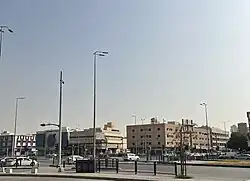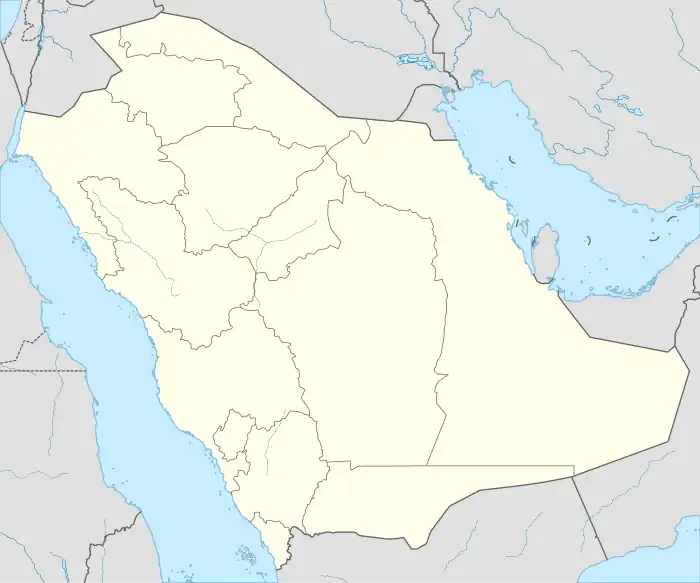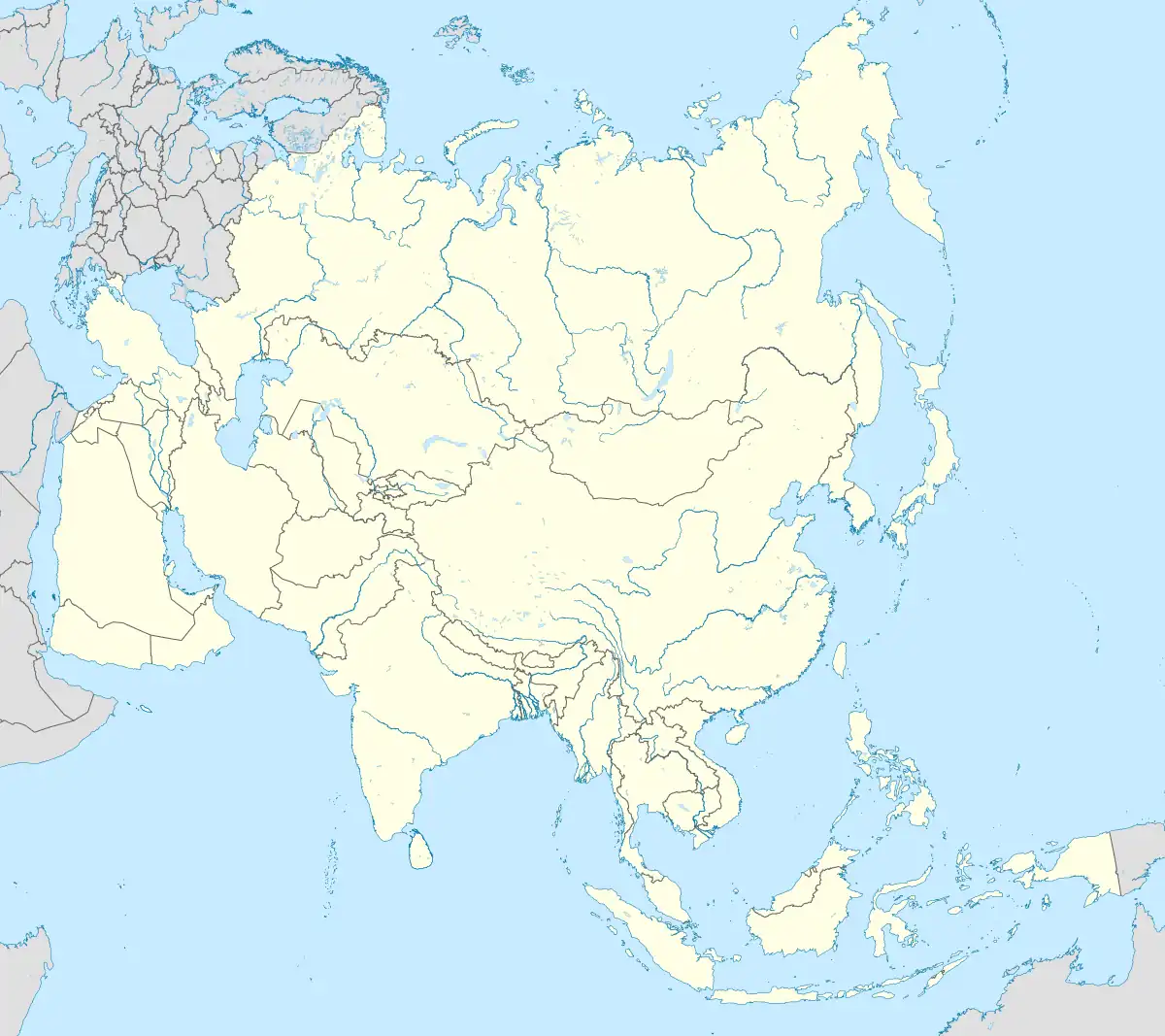Al-Malazz
حي الملز | |
|---|---|
 Al-Malazz, 2023 | |
 Al-Malazz  Al-Malazz | |
| Coordinates: 24°39′53″N 46°44′7″E / 24.66472°N 46.73528°E | |
| Country | Saudi Arabia |
| City | Riyadh |
| Established | 1954 |
| Founded by | Saud bin Abdulaziz |
| Named for | Al-Malaz Square |
| Government | |
| • Body | Baladiyah Al Malaz |
| Language | |
| • Official | Arabic |
Al-Malazz (Arabic: حي الملز, romanized: ḥaī al-Malaz), formerly al-Riyadh al-Jadidah (lit. The New Riyadh)[1] and the Red Sea neighborhood,[2] is a commercial and residential neighborhood and the seat of the sub-municipality of its namesake, al-Malaz, in downtown Riyadh, Saudi Arabia. Named after the al-Malaz Square (now King Abdullah Park), it was established in 1954 by King Saud bin Abdulaziz as a housing project for government employees and was later developed into a full-fledged district. The neighborhood has a large presence of overseas Syrian community alongside native Saudi nationals.[3]
It the very first modern locality in the city, alongside the al-Nassiriyah district, which replaced the traditional Arab architecture with a modern one.[4] The area is also popular for hosting several iconic landmarks, supermarkets, streets and government ministries.[5]
History

Prior to its development and during the early days of Saudi Arabia's establishment, the area had several names such as Abu Makhruq, Wattah and al-Khirbat. The area barely had buildings or streets except an equestrian field, known as al-Malaz Square, where King Abdulaziz ibn Saud enjoyed horse racing shows and from where the locality adopted the name Al Malaz by the end of his reign,[6] which was later shifted to Jenadriyah Farm in 2002.[7] After the ascension of King Saud bin Abdulaziz to the throne in 1953, he initiated the relocation of government ministries from Jeddah to Riyadh.[8] In order to meet the accommodation needs of the employees, he launched the 'Al-Malaz Housing Project' of almost 750 villas for the same. According to scholar Faisal al-Mubarak, Al-Malaz was a large-scale housing development encompassing 754 single-family homes, 340 apartment units, and a plethora of supporting facilities including a municipal hall, a library, a fire station, schools, a market, and recreation and health facilities.[9]
The Al Malaz suburb stood as an antithesis to the traditional mud communities surrounding the walled town.
— Faisal al-Mubarak
In 1957, the first campus of Riyadh University was established in the area, followed by Riyadh Zoo.[8] The neighbourhood saw rapid development and expansion during the economic boom of the late 1970s and early 1980s,[10] which later included several shopping centres, schools and restaurants.
References
- ↑ "Riyadh Architecture in One Hundred Years". Center for the Study of the Built Environment. Retrieved 2021-05-19.
- ↑ "وسط الرياض.. حنين على ما تبقى من ذكريات!". www.alriyadh.com. 2014-07-06. Retrieved 2022-03-06.
- ↑ الرياض, عبد الله محمد ـــ (2006-09-24). "الهنود حول المطاعم". alyaum (in Arabic). Retrieved 2023-12-11.
- ↑ "الملز .. قصة الحي الخالد في الذاكرة السعودية "1"". صحيفة الاقتصادية (in Arabic). 2018-12-21. Retrieved 2021-05-20.
- ↑ "حي الملز". مدونة عقار (in Arabic). 2021-02-07. Retrieved 2021-10-15.
- ↑ الشامي, كتبه: خالد (2019-06-11). "سباقات الخيول في دول الخليج". خيار الكازينو العربي (in Arabic). Retrieved 2021-05-20.
- ↑ "سباق الخيول في ميدان الملك عبدالعزيز بالرياض". سائح (in Arabic). 2016-05-19. Retrieved 2021-05-20.
- 1 2 "حي الملز.. من صحراء إلى سكن للوزراء". صحيفة الاقتصادية (in Arabic). 2009-02-08. Retrieved 2021-05-20.
- ↑ Bsheer, Rosie (2020-09-22). Archive Wars: The Politics of History in Saudi Arabia. Stanford University Press. ISBN 978-1-5036-1258-7.
- ↑ "حي الملز.. ربيع العمر و"طفرة التحضّر"!". Al Riyadh. 2011-11-25. Archived from the original on 2016-03-24. Retrieved 2021-05-20.